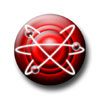SITEMAP THEMES I: YOGA
YOGA

YOGA
From the sankrit yuj (union) which gave the english word ‟yoke”, yoga appeared at least 5,000 years ago in northwestern India, as testified by ancient coins representing a yogi sitting in the lotus position.
Written between the 2nd and the 3rd century AD by Patanjali, the Yoga Sutras constitute the basic reference manual of yoga. The Yoga Sutras specify the eight precepts that govern the practice of yoga:
– Yama (the moral code for interactions with other people)
– Niyama (the moral code for the self)
– Asana (posture)
– Pranayama (controlling breathing and thus the prana or vital energy)
– Pratyahara (the reversal of sensory activities towards the inside)
– Dharana (the concentration of attention on an object)
– Dhyana (meditation, the contemplation of the true nature of reality)
– Samadhi (liberation, the hyper conscious state of illumination)
Patanjali’s ancient yoga (also called Raja Yoga) is opposed to the more recent yoga of Swatmarama (or Hatha Yoga), developed during the 15th century AD. Their opposition is mainly due to the fact that Hatha Yoga concentrates on the purification of the body, leading to the purification of the soul. In the case of Raja Yoga, the process is reversed: it is the work of the mind that produces the energy that generates the postures. We can thus say that Raja Yoga is a yoga of the mind, when Hatha Yoga is a yoga of the body.
Consequently, we will focus our study on Raja Yoga, the mental form of yoga. We will study this form of yoga in the light of the discoveries in cerebral physiology of Doctor Francis Lefebure, a French physician and scientist who, thanks to the systematic use of the phosphenes, designed a protocol of exploration of the brain: cerebroscopy. The phosphenes are all the subjective sensations of light, i.e. those which are not directly produced by light stimulating the retina. They can be produced by focusing on a source of light for a short period of time. Cerebroscopy allowed Dr Lefebure to measure precisely the effect of the exercises of yoga on the brain and to establish laws of cerebral physiology applied to initiation, thus creating a scientifically improved yoga: Phosphenism.
Dr Lefebure demonstrated that the phosphene is a reversal of the sense of sight towards the inside, the same way the acouphene is a reversal of the sense of audition towards the inside. In fact, to each physical sense corresponds an inner sense, forming together a second sensory system: the phenic system. Mixing a thought with a phene is the basic exercise of Phosphenism. We believe this constitutes the true meaning of Pratyahara or reversal of sensory activity towards the inside. There is also a phene related to breathing, the pneumophene, that can be stimulated by maintaining a slight ‟thirst for air”.
Exercise: Square breathing
Set your metronome on 60 BPM, i.e. one beat per second.
Do a phosphene.
Breathe in for 6 seconds.
Maintain the air in your lungs for 6 seconds (Retention with lungs full).
Breathe out for 6 seconds.
Maintain your lungs empty for 6 seconds (Retention with lungs empty).
Continue this cycle until the phosphene disappears (roughly three minutes).
Do another phosphene and start the cycle again.
Visualize a dot of light rotating in your lungs during the phases of retention.
This value of 6 seconds is only a guideline, other values can be used, depending on the capacity of one’s lungs. It is the precise regularity of the phases that is important.
Exercise: Circular breathing
Similar to square breathing, circular breathing does not, however, contain phases of retention. It is a kind of square breathing which angles would have been rounded off.
Set your metronome on 60 BPM, i.e. one beat per second.
Do a phosphene.
Breathe in for 4 seconds, starting by breathing very little and progressively increasing the flow of air.
Keep breathing in for 4 more seconds but, this time, progressively reduce the flow of air until you barely breathe in.
Breathe out for 4 seconds, starting by breathing very little and progressively incresing the flow of air that comes out of your lungs.
Keep breathing out for 4 more seconds but, this time, progressively reduce the flow of air until you barely breathe out.
During circular breathing, visualize a dot of light rotating inside your lungs or around your head, or around your body. The dot of light can follow the rhythm of breathing (one full circle in 16 seconds).
Maintain this breathing cycle until the phosphene has disappeared (approximately three minutes).
Do another phosphene and start the cycle again.
The value of 4 seconds is only a guideline, other values can be used, depending on the capacity of your lungs.
Nevertheless, we advise you to start practicing with these values as increasing the length of the phases is not the purpose of this exercise. The purpose of this exercise is to breathe with a slight lack of air.
Importante Note
We have done our best to provide you with the most accurate translation of our french website. Nevertheless, it is possible that some language errors may remain. So, don’t hesitate to contact us to communicate them to us.
Thank you for your indulgence and for your consideration of the many hours spent translating all our pages and, more particularly, all the testimonies we share with you so that you may become aware of the impact that Phosphenism can have on those who practice it.
Wishing you the best with your practice of Phosphenism.
Daniel Stiennon (Dr. LEFEBURE School Director, France)






 Photograph of a phosphene (diffuse glow or UFO?)
Photograph of a phosphene (diffuse glow or UFO?)


